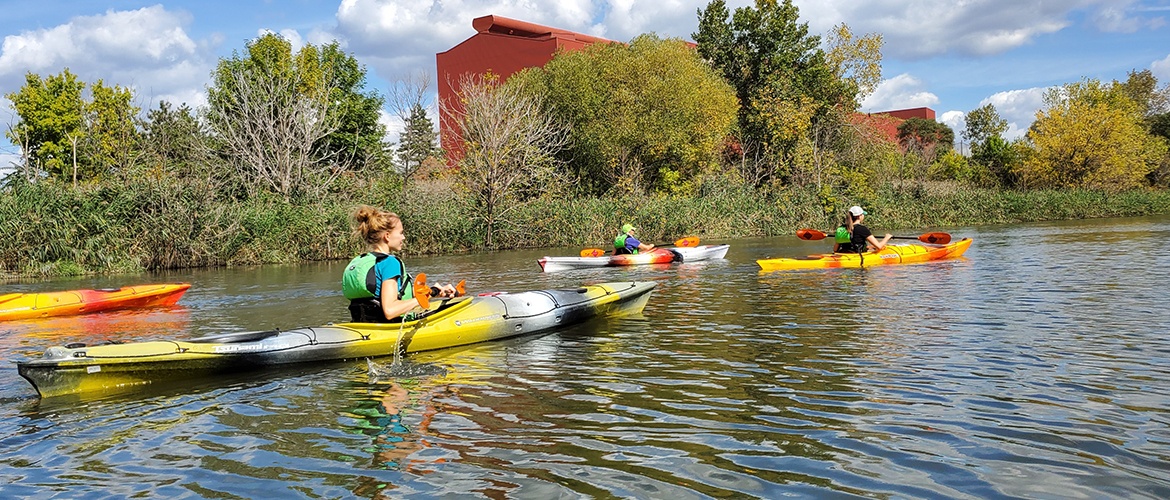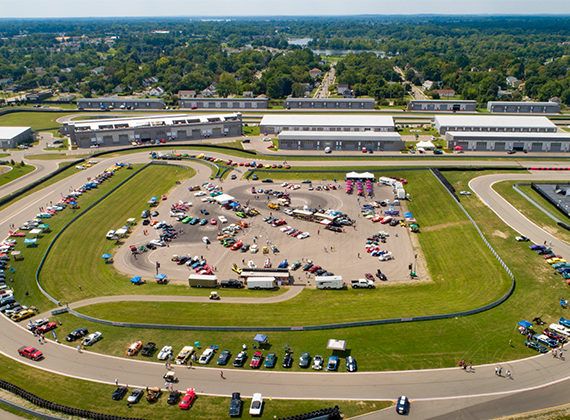The Vital Role of Parks: Well-being, Community, & More

Since the COVID-19 pandemic, the importance of providing outdoor opportunities has become relevant in conversations pertaining to the well-being of individuals. While the pandemic has emphasized the importance of these spaces, parks and recreation have long been considered essential for the welfare of individuals, as well as the vitality of both communities and neighborhoods. Outdoor recreational spaces improve the environment, provide community engagement, learning opportunities, economic value, health benefits, tourism, and much more. From urban to suburban areas, parks and recreational spaces have a significant influence on the communities they serve.
Parks play an integral role in preserving the health of the environment. They cleanse the air of carbon dioxide and other pollutants, protect wildlife, and replenish groundwater. Parks can also reduce stormwater runoff by providing pervious surfaces for water infiltration, playing an integral role in flood prevention and reducing the necessary size of city stormwater management systems. Additionally, city parks can be as much as 17 degrees cooler than the surrounding paved areas, providing cooling areas in urban heat islands.
Home values are higher near green spaces; cities and neighborhoods with parks are more desirable places to both live and work. Residents want access to beautiful views, health benefits, and the activities parks provide. Parks provide residents with a setting to participate in communal activities such as concerts, festivals, and athletic events. Vibrant markets, energizing music, and access to nature add a sense of place and character to the surrounding neighborhoods. According to a study done at the University of Illinois, people living closer to green spaces enjoy more social activities, know more neighbors, and have stronger feelings of belonging (Kuo et al., 1998). Parks that are accessible to people of all ages and abilities are the perfect place to connect and interact in a shared environment.
While parks provide spaces to host larger community events, they also provide endless opportunities for individuals and groups to exercise. Hiking and mountain bike trails, paved pathways, swimming, kayaking, disc golf, and cross-country skiing are just a few of the activities found in many parks. Access to parks can also provide incidental exercise for people who are not enthusiastic about physical activity. Walking around a nature center, meandering along a river on a paved trail, or even walking or biking through a greenspace to reach a shop or restaurant, parks are a great source of exercise.
Not only do parks provide opportunities for physical activity, but they also play a vital role in psychological health. Kids with attention deficit disorder are more likely to concentrate in school after participating in activities held in a park setting. Views of trees from a hospital room or a cramped city apartment are shown to improve mental health and speed up recovery time, leading to less mental fatigue and shorter hospital stays (Wilson, 1984). During the pandemic, spending time in green spaces was vital for many people, and studies show that people who were able to get out in nature had more positive mental health outcomes, including less anxiety and depression and higher levels of self-esteem throughout the pandemic (Soga, 2020). Parks and greenspaces provide relief to those surrounding.
In addition to improving physical and mental health, parks also provide exercise for the brain. From hands-on activities to field trips, park systems create endless learning opportunities. Both children and adults can gain knowledge about their natural environment by experiencing it hands-on, whether it is hiking, walking through a nature center and reading interpretive signs, or enjoying an interactive play area. Many parks also include opportunities to learn about the culture and history of an area through historical preservation. Whether you are interested in visiting Abraham Lincoln’s birthplace or learning about the geology of the Rocky Mountains, a visit to a park will make that possible.
In 2020, the National Park Service had roughly 230 million visitors. While this number was the lowest since 1980, the National Parks still saw many visitors despite the COVID-19 pandemic (NPS, 2021). This number highlights the relationship between parks and tourism. Influxes of tourists create jobs and boost the local economy. In 2013, spending at local, regional, and national parks totaled $200 billion in the United States (NRPA, 2016). When people travel to see the attractions and events provided by park spaces, they will patronize local shops, restaurants, and hotels, benefiting the economy.
While parks have many benefits, due to increased urbanization, not everyone has access to green spaces. However, more research is necessary to understand the importance of nature and public health and prioritize public green spaces in cities and metropolitan areas. While more research may be necessary, undoubtedly, parks have a vital role within our communities.
Sources/Articles
- https://www.nrpa.org/parks-recreation-magazine/2019/april/parks-as-a-solution-to-climate-change/
- https://onlinelibrary.wiley.com/doi/abs/10.1023/A:1022294028903
- https://conservationtools.org/library_items/729-the-benefits-of-parks-why-america-needs-more-city-parks-and-open-space
- https://recreation.eku.edu/importance-parks-and-recreation
- https://www.verywellmind.com/nature-can-boost-mental-health-during-the-pandemic-study-finds-5088601
- https://esajournals.onlinelibrary.wiley.com/doi/10.1002/eap.2248
- https://www.news-medical.net/news/20201211/Access-to-outdoor-spaces-benefits-mental-health-wellbeing-during-COVID-19-lockdown.aspx)
- https://www.nps.gov/subjects/socialscience/annual-visitation-highlights.htm
- http://cloud.tpl.org/pubs/benefits_HealthBenefitsReport.pdf
